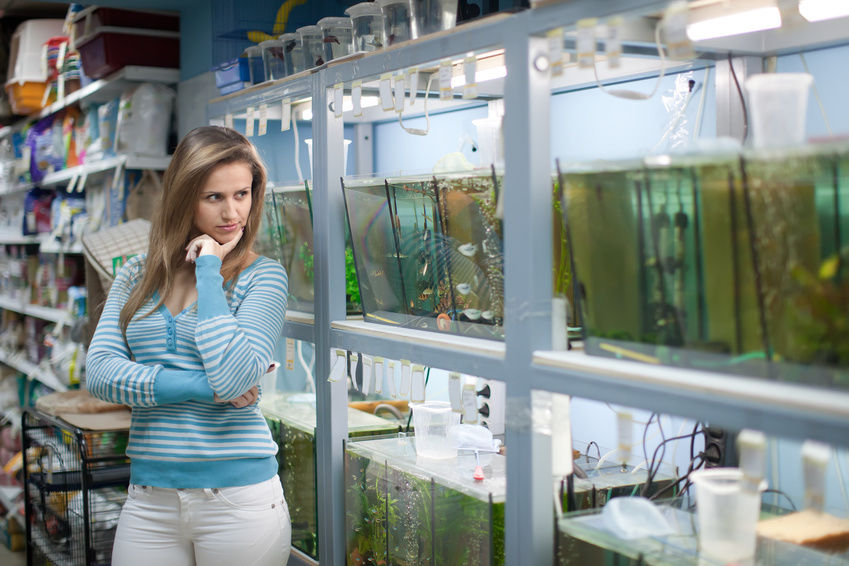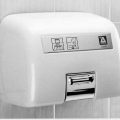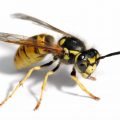One of the most exciting parts of getting an aquarium is choosing your fish, after all, it’s why you’ve gone through all the efforts of picking the right equipment and making their new home look amazing. Of course you’re going to be buying the regular fish when you begin, and suffering a few deaths at first because the new fish, are unfortunately the pioneers of the new world you’ve created. But once your environment is settled you can start to pick out the exciting fish, the ones that will look super cool in your tank.
Here is a rough guide to choosing the fish for your aquarium:
You’ll need to make sure you are always looking ahead when you select fish at the store. You might choose some tiny fish that would fit perfectly in your tank as it is, only to find they grow to huge sizes and become too big to live in the tank happily. When fish are babies they tend to all be roughly the same size, so you need to see an adult fish in a tank to assess how big they will grow. The assistants at the shop should be able to show you both juvenile and fully grown fish and advise you on how many fully grown fish are suitable for your tank size.

You’ll want to begin your tank with a really good stock of hardy fish that don’t give up the ghost easily. Platies are a really good choice for your first fish and should be able to endure the period of time it takes for your tank to settle and become a good environment for fish to live in.
Try not to buy the most glamorous, exotic fish at first because you’ll waste your money and your time, because they simply won’t last long. As a priority, you should always be looking out for healthy fish when you buy, especially if you’re purchasing your first batch. If your very first batch are diseased you will end up with all sorts of problems.
A good aquarium shop always has a hospital tank where poorly fish go when they need to be observed and treated. If you see a tank with an ill fish in it, avoid the tank and choose from another tank with a healthy community. Also make sure you choose the fish you want from the tank in case you haven’t spotted any ill ones. The assistant will just grab the first fish they can get, which might be an ill one if you don’t choose the exact fish you want.
Top Tips-
- Get the best, healthiest fish. Do not fall into the trap of feeling sorry for the peaky looking one that’s having trouble.
- Never purchase healthy looking fish from a tank that contains an ill looking fish.
- Never purchase a juvenile fish without checking the size the adults grow to.
- Always equalise the water.
Once the fish have been purchased it’s time for you to prepare your tank and equalise the water properly. If you do not equalise the water, you could kill your new fish or stress them out. If you have invested a lot of money in a good aquarium heater or aquarium chillers, it is important the fish you introduce get used to the temperature of the water you have cultured. To do this you simply need to float the bag the fish come in on top of the tank water for a good 15-20 minutes before you release them.
Different Fish With Different Needs
Fish can be really picky – really picky. Some of them like to hide under rocks, some of them are really picky with their water temperature. And as their owner, it is up to you to accommodate their needs as much as possible. So whilst most fish can adapt to their environment somewhat, the best thing to do is buy fish that will suit the tank you have. This is why it’s important to think ahead before choosing your tank setup, because if you have your heart set on one type of fish and then find out that your tank is not set up for it after you’ve spent loads on the set up, you’re either going to have to forget about your dream tank residents or spend a lot more money adapting it to suit the fish.
Overcrowding
A lot of the time, new aquarists get an amazing tank set up and fill it with too many fish, and before long the tank water is toxic and all the fish are dead. It’s a really quick way to throw money down the drain and waste precious lives unnecessarily. Remember this one golden rule when you’re filling your tank with fish:
You can always add more fish, but it’s really difficult to remove them unless they are dead.
The easiest way to calculate how many fish you can have in your tank is to use a simple formula like this one:
The length of your tank X the width of your tank + the water surface area. You then divide this number by the average size of the fish you want to add.





























